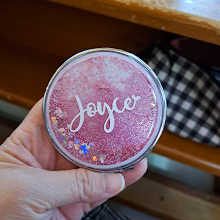Always consider incorporating nutrient-dense food items in your diet in order to mitigate your guilt and the effects of highly seasoned snacks indulged during festive celebrations.
However, Despina Hyde, a registered dietician with the weight management program at New York University's Langone Medical Center says the following.
"When we label these foods as 'super' and 'healthy', people think they can eat them in unlimited quantities. But you do have to be cautious of the amount you eat, because you can gain weight from eating too much healthy food."
Blueberries
Blueberries are packed with antioxidants, potassium, and Vitamin C. They are great in neutralizing free radicals and preventing aging and cell damage. Flavonoids, particularly anthocyanins, appear to be responsible for the antioxidant effect, which is why darker berries are the ones to pick.
Tip: You can eat blueberries on its own or consider dropping a handful in a cup of yogurt or salad.
Photo by Karyna Panchenko on Unsplash
Chia Seeds
These tiny dynamos come from a plant related to the mint. In addition to containing soluble and insoluble fibers, the seeds swell up by absorbing many times their weight in liquid. This helps keep your digestive system regular and make you feel full for longer. The seeds are also packed with omega-3 fatty acids, proteins, and trace minerals such as calcium and phosphorus.
Tip: Sprinkle them over anything, including salads, soups, and desserts.
Kale
Kale is a member of the cabbage family and related to other cruciferous vegetables such as cauliflower and broccoli.
It contains numerous antioxidants such as Vitamin C, polyphenols, and beta-carotene, among others. It also contains Vitamin K to support regular blood-clotting functions. Kale also contains bile acid sequestrants, which can lower cholesterol, and cancer-fighting chemicals such as sulfuraphane and indole-3-carbinol. Low calorie but high in bulk, kale can definitely be part of your weight-loss diet.
Tip: Kale is best consumed raw or quickly blanched. Adding it to salads or consider juicing it or making it part of a smoothie. Kale, mixed grain rice, and wheat germ brown rice provide bulk due to their high fiber content.
Background photo created by valeria_aksakova
Salmon
As an oily fish, salmon's fat content is mostly composed of omega-3 fatty acids. This group of fatty acids has been linked to numerous health benefits, the most important of which is arguably lowering the risk of cardiovascular disease.
Other benefits of omega-3 fatty acids include lowered risk of dementia and depression. Besides fatty acids, salmon also contains plenty of high-quality protein as well as a range of minerals, such as selenium, magnesium, and potassium.
Tip: Having it sashimi-style is a great way to consume salmon if you don't mind eating raw stuff. Otherwise, baking is a healthy way to cook salmon. Spritz with cooking spray rather than slathering with butter or olive oil.
Article source: Live Great Reads































No comments